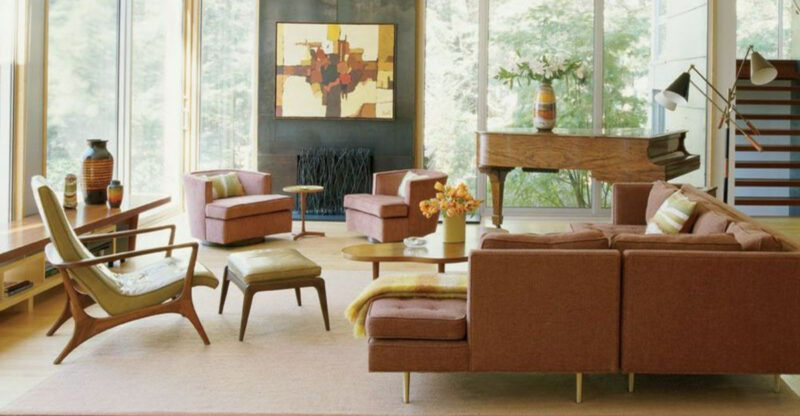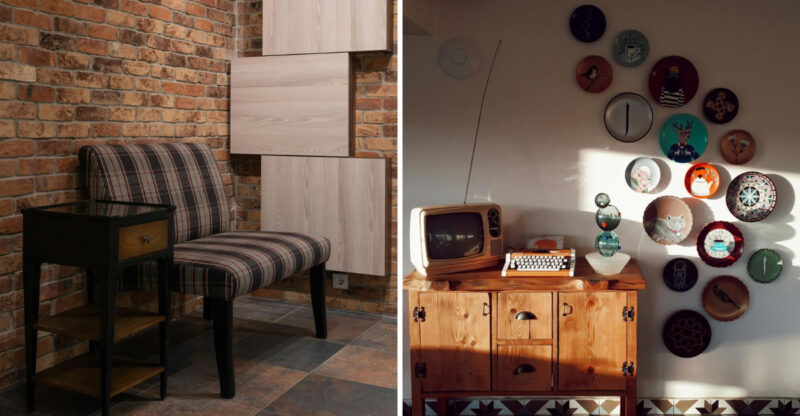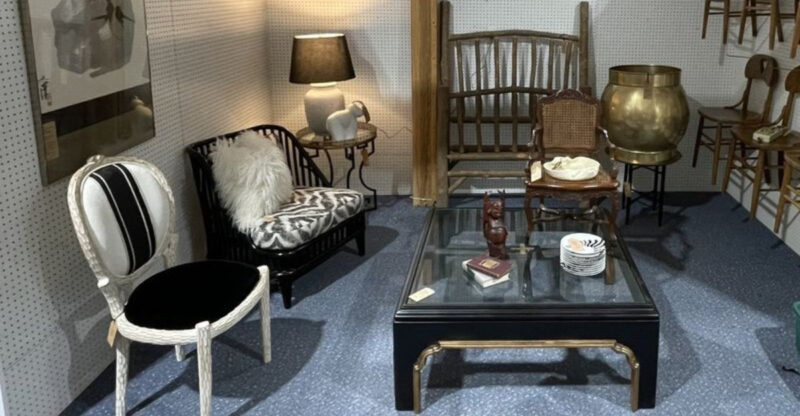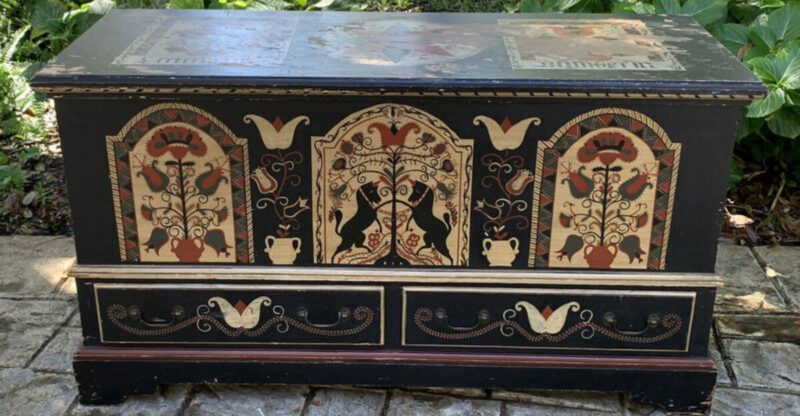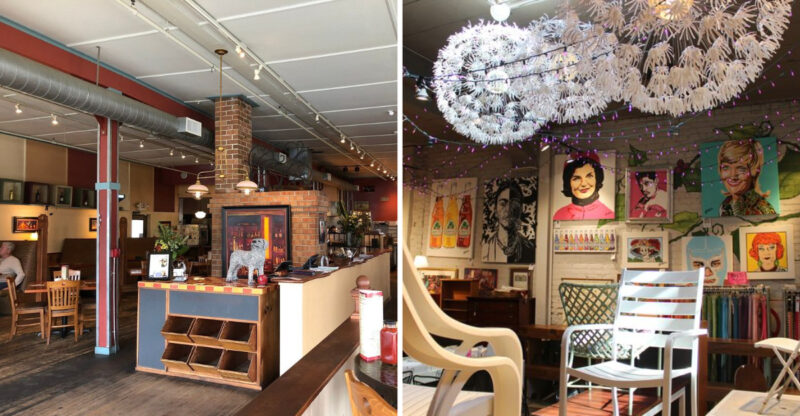The Vintage Kitchen Cabinets In Wisconsin Homes That Feel Like A Step Back In Time
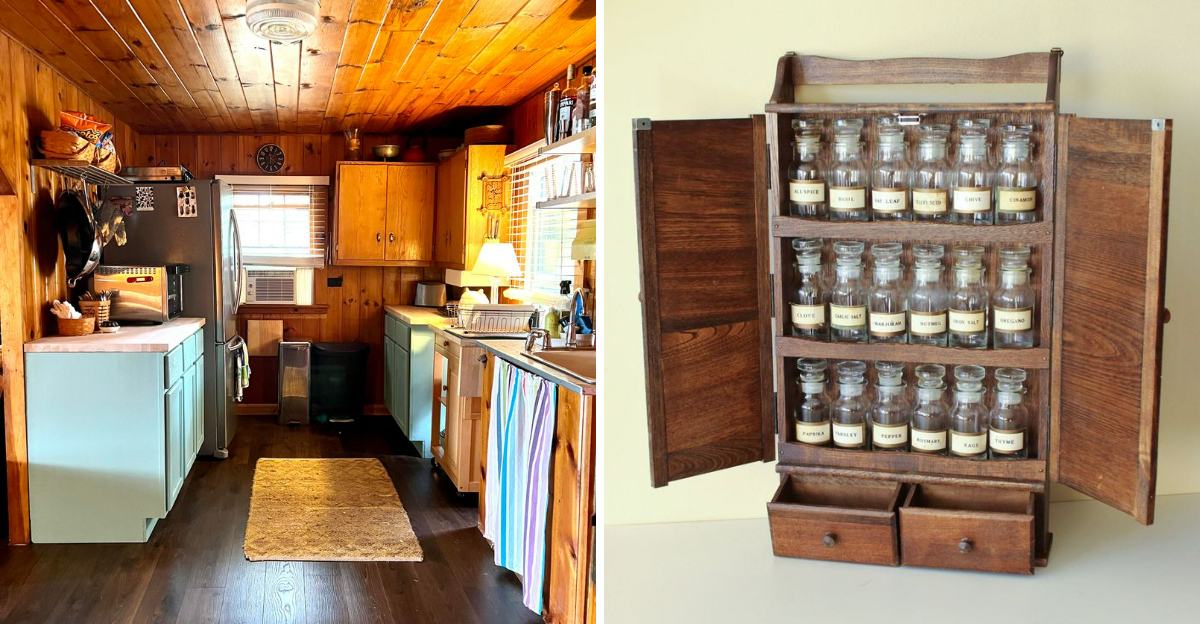
Walking into certain Wisconsin kitchens feels like opening a time capsule from decades past. Original cabinets from the 1940s, 50s, and 60s still stand in homes across the state, showcasing craftsmanship and design choices that modern renovations often erase.
I want to share some of the most charming vintage cabinet styles that transport you straight back to simpler times.
1. Glass-Front Upper Cabinets
Displaying your best dishes behind glass doors was once the height of kitchen sophistication. Grandmothers across Wisconsin arranged colorful Pyrex and china collections for everyone to admire through these elegant cabinet fronts.
The glass panes let you find what you need without opening every door. Original wavy glass adds extra charm, distorting reflections in ways that perfectly flat modern glass never does.
I find these cabinets encourage you to keep things organized and pretty.
2. Two-Tone Painted Cabinets
Contrasting colors on upper and lower cabinets created visual interest before open-concept designs existed. Wisconsin homeowners often chose cream or white on top with deeper greens, blues, or yellows below.
This design trick made small kitchens feel more spacious and less boxy. The paint finishes have often mellowed beautifully, developing slight cracks and wear that add authentic vintage appeal.
Replicating this aged look intentionally never quite captures the real thing.
3. Built-In Flour Bins and Pull-Out Surfaces
Smart storage solutions existed long before modern organizer systems flooded the market. Old Wisconsin cabinets often featured metal flour bins that tilted forward for easy scooping, plus pull-out enamel surfaces for rolling dough.
These thoughtful details show how seriously previous generations took their baking. The bins kept ingredients fresh and pests away better than bags or boxes.
Finding one still intact and functional feels like discovering hidden treasure in your own home.
4. Knotty Pine Beauties from the 1950s
Warm honey tones and natural wood grain make knotty pine cabinets instantly recognizable. Homeowners in the 1950s loved this affordable wood choice that brought rustic charm into their kitchens.
Every knot tells a story, creating unique patterns you won’t find in mass-produced modern cabinets. The wood develops a richer patina over decades, adding character that new finishes simply can’t replicate.
Many Wisconsin families kept these originals because they’re surprisingly durable and timeless.
5. Metal Cabinets with Chrome Handles
Picture a kitchen where cabinets gleam like a classic car bumper. Metal cabinets became wildly popular during the 1940s and 50s because they promised easy cleaning and modern style.
You’ll often spot them in pale yellow, mint green, or crisp white finishes. The chrome handles and trim catch light beautifully, giving kitchens that authentic diner aesthetic.
These sturdy units have outlasted many wooden replacements, proving their makers knew something about quality construction.
6. Shallow Spice Cabinets in Door Panels
Clever carpenters carved shallow spaces into cabinet door backs for storing spice jars. You’d open the door and find neat rows of seasonings right at eye level, perfectly organized without taking up shelf space.
This innovation made cooking more efficient when kitchens were considerably smaller than today. The narrow shelves prevented bottles from getting lost in dark cabinet corners.
Modern homeowners pay big money for pull-out spice racks that essentially copy this vintage idea.
7. Curved Corner Cabinets
Square corners disappeared in some vintage kitchens, replaced by gracefully curved cabinet fronts. These rounded units softened the room’s geometry while maximizing storage in awkward corner spaces.
Craftsmen shaped and fitted these custom pieces by hand, creating smooth curves that required real skill. The rounded doors often featured multiple small panels that followed the cabinet’s contour.
You rarely see this level of detailed woodworking in standard modern cabinetry installations anymore.
8. Hoosier-Style Workstation Cabinets
Before fitted kitchens became standard, freestanding Hoosier cabinets served as complete baking stations. Wisconsin homes treasured these all-in-one units that combined storage, workspace, and built-in sifters.
The pull-out porcelain work surface gave you extra prep space when needed. Upper glass doors displayed everyday dishes while lower compartments hid pots and dry goods.
Many families still use these cabinets daily, proving good design never really goes out of style.
9. Open Shelving with Decorative Trim
Before closed cabinets became the standard, many Wisconsin farmhouses featured open shelving systems adorned with beautiful carved trim. Homeowners displayed their finest dishes, mixing bowls, and canning jars for everyone to see. The decorative scalloped edges and hand-carved details showed off the woodworking skills of local craftsmen.
Many families kept their everyday items within easy reach on these shelves. Grandmother’s teacups, mixing bowls passed down through generations, and colorful Depression glass would line the wooden planks. Today, these open shelves create a warm, nostalgic feeling that modern kitchens often try to recreate.
Preserving these shelving units means maintaining a piece of Wisconsin history in your home.
10. Beadboard Cabinet Doors with Porcelain Knobs
Beadboard paneling gives cabinet doors a distinctive vertical lined texture that was extremely popular during the 1920s and 1930s. Wisconsin cottages and bungalows often featured these charming doors paired with smooth white porcelain knobs. The simple design reflected practical thinking while still looking attractive and homey.
Homeowners appreciated how beadboard hid minor imperfections in the wood while adding visual interest. The vertical lines made small kitchens appear taller and more spacious. Original porcelain knobs often featured delicate patterns or remained pure white, creating a clean appearance that complemented the textured doors perfectly.
Finding cabinets with original hardware intact makes them especially valuable to collectors and history enthusiasts.
11. Dark-Stained Oak with Brass Latches
Heavy oak cabinets finished in rich, dark stains dominated Wisconsin kitchens during the late 1800s and early 1900s. Craftsmen built these sturdy pieces to last for generations, using thick wood panels and strong joinery techniques. Ornate brass latches and hinges added an elegant touch to the substantial doors.
Families valued the durability and formal appearance these cabinets brought to their homes. The dark finish showed less wear from daily use and cooking splatters. Intricate brass hardware often featured decorative patterns inspired by Victorian design trends popular throughout the Midwest.
These cabinets represent a time when kitchen furniture was built with the same care as fine dining room pieces.

